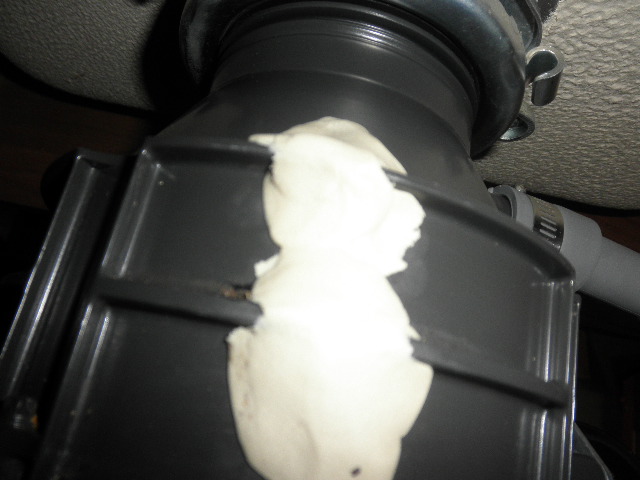How do you really feel when it comes to The Handy Guide To Fixing Your Garbage Disposal Leaking?

Waste disposal unit are crucial cooking area devices that assist in disposing of food waste effectively. However, a dripping garbage disposal can be a discouraging and messy trouble to handle. Fortunately, lots of leakages can be taken care of conveniently with a few straightforward steps. In this post, we will certainly talk about exactly how to repair a dripping waste disposal unit efficiently.
Intro
Waste disposal unit are installed under kitchen sinks and are created to shred food waste right into smaller sized items, allowing it to go through the pipes system conveniently. While these tools are generally dependable, leaks can happen in time because of deterioration, loose connections, or damage to the unit.
Common Causes of Leakages in Waste Disposals
Worn Seals and Gaskets
Seals and gaskets play a crucial duty in protecting against water from dripping out of the garbage disposal. In time, these elements can deteriorate, leading to leakages around the disposal system.
Loose Connections
The links between the garbage disposal and the pipes system can become loosened with time, triggering water to leak out throughout operation.
Splits or Holes in the Disposal Device
Physical damage to the waste disposal unit, such as cracks or openings in the housing, can additionally lead to leakages.
Identifying the Resource of the Leak
Before trying to repair a leaking waste disposal unit, it is important to determine the resource of the leakage. This can typically be done via visual evaluation or by carrying out straightforward examinations.
Visual Inspection
Inspect the waste disposal unit device very carefully for any type of signs of water leak. Pay close attention to locations around seals, gaskets, and connection factors.
Evaluating for Leakages
One way to examine for leaks is by running water via the disposal unit and looking for any kind of visible indicators of leak.
Tools and Materials Needed for Dealing With a Leaking Garbage Disposal
Prior to starting the repair work procedure, collect the necessary tools and materials, including a screwdriver, adjustable wrench, plumber's putty, replacement seals or gaskets, and epoxy or patching material for repairing splits or openings.
Step-by-Step Guide to Dealing With a Leaking Garbage Disposal
Switch off the Power
Before trying any type of repairs, make certain that the power to the garbage disposal device is turned off to stop the risk of electrical shock.
Locate the Leakage
Determine the specific location of the leakage and determine the cause.
Tighten up Links
Utilize a wrench to tighten up any loose connections in between the disposal system and the pipes system.
Change Seals or Gaskets
If the leak is because of worn seals or gaskets, remove the old parts and change them with new ones.
Patching Splits or Holes
For splits or holes in the disposal device, use epoxy or a suitable patching product to seal the broken area.
Checking the Garbage Disposal After Fixing
Once the repair service is complete, evaluate the waste disposal unit by running water through it to guarantee that the leakage has actually been fixed.
Preventive Upkeep Tips to Prevent Future Leakages
To stop future leakages, it is essential to carry out routine upkeep on your waste disposal unit. This consists of maintaining it tidy, staying clear of putting non-food products or difficult items down the disposal, and regularly checking for leaks or other issues.
Conclusion
In conclusion, taking care of a leaking garbage disposal is a fairly straightforward procedure that can be completed with fundamental tools and materials. By adhering to the steps laid out in this short article and exercising preventive upkeep, you can maintain your garbage disposal in good working condition and stay clear of costly repair services in the future.
HERE’S HOW TO FIX YOUR GARBAGE DISPOSAL
WHAT TO DO IF SOMETHING IS STUCK IN YOUR GARBAGE DISPOSAL
If the impeller won’t turn, there’s probably something stuck in the disposal. It could be a steak bone or peach pit, although plumbers report pulling all sorts of inappropriate objects out of disposals, such as bottle caps or aluminum foil. Make sure power to the disposal is off, and look inside to see if you can see the source of the jam.
Never stick your fingers in a disposal. Pull out anything you see with tongs or pliers.
If the disposal still won’t work, it may be time to call a plumber or consider buying a new disposal. GEM Plumbing & Heating is here for all of your garbage disposal needs.
WHAT TO DO IF YOUR GARBAGE DISPOSAL DRAIN IS CLOGGED
Take everything out from underneath your sink and put a bucket or other container under your disposal to catch any water that drains out. Disconnect your disposal from the power supply. If it’s plugged into a wall outlet, unplug it. If it’s hardwired into an electrical box, go to the electrical panel and turn off the breaker for the disposal. Pour ¼ cup of baking soda into the drain, followed by ½ cup of white vinegar. Give the solution a few minutes to fizz and do its work. Look into the disposal with a flashlight to see if you can see an object that might be causing the clog. If you see it, remove it using tongs or pliers. MORE TIPS ON DEALING WITH A CLOGGED GARBAGE DISPOSAL
Never use drain cleaner in a garbage disposal. It can damage the plastic parts inside the disposal. You can also be splashed with the caustic liquid while working to clear the clog. Beware! Never stick your fingers into a garbage disposal. Trust us — not a good idea. In many instances, your dishwasher drains through your garbage disposal. This allows the disposal to grind any large food particles that may be drained out of your dishwasher. There are some jurisdictions, however, where the plumbing code prohibits such a connection. WHAT TO DO WHEN YOUR DISHWASHER DRAINS THROUGH THE DISPOSAL
Run some water in the sink so your plunger has at least a ½-inch of water to create a seal and plunge vigorously up and down several times. You may need to repeat this several times. Run hot water down the drain to clear any residue that remains.

As a serious person who reads on Why Is , I figured sharing that piece of content was worthwhile. Liked our write-up? Please share it. Help someone else discover it. Thanks a bunch for your time. Don't hesitate to stop by our blog back soon.
Click Here